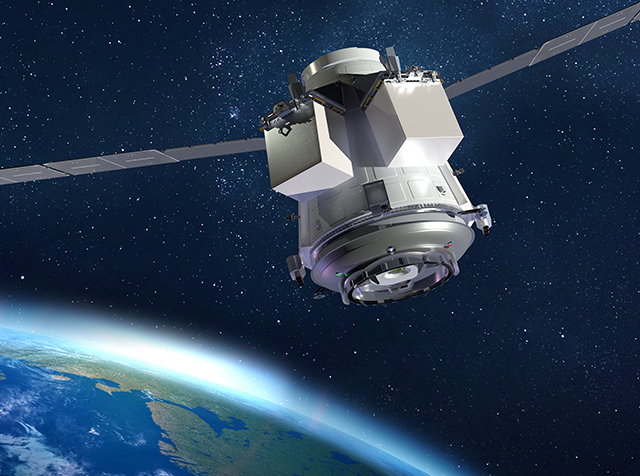
Sierra Nevada Corp’s “Shooting Star” spacecraft
WASHINGTON: The Defense Innovation Unit (DIU) picked Sierra Nevada Corp’s “Shooting Star” spacecraft, originally designed to carry payloads to the ISS for NASA, as its “Unmanned Orbital Outpost” space station to test capabilities — and perhaps in future serve as on-orbit fuel stations or logistics hubs.
“The most immediate and logical use [of the station] is to facilitate the flight qualification of new hardware,” Brig. Gen. Bucky Bustow, DIU’s space portfolio director, told Breaking D in an email today. “There is a steady stream of new components, sensors and systems that ultimately require operational employment in space for reliability and mission assurance.”
He said that “a wide range of payloads are under consideration” for the station — including from the list of tech efforts approved by DoD’s Space Experiments Review Board. “For example, the outposts could support payloads from the SERB list without the need to build a dedicated bus,” he explained.
“Additionally all outposts will provide services to their payloads including power, communications, and possibly robotics,” Bustow added. “Besides prototype payloads, outposts are intended to serve as logistics nodes and as such could host fuel depots and support berthing or docking.”
While the initial project is all about autonomous, robotic activities, Breaking D readers may remember that in last year’s solicitation for the project, DIU raised the possibility that future iterations of the space station might actually be manned.
And while the 1967 Outer Space Treaty technical doesn’t bar military troops from being based in space, the concept of manned military space station is controversial, both for political and cost/benefit reasons. (Indeed, the US military back in the 1960s studied the concept of a Manned Orbiting Laboratory under a highly classified program, but cancelled the program pretty quickly.)
Indeed, the DIU effort as it stands already is raising some eyebrows among experts. The Space Force already operates the X-37B space plane, which also is a test platform that, while not quite a space station, does spend long periods of time on orbit undertaking mostly classified tests and operations
“It does raise a lot of questions: namely, what R&D/scientific research did they want to work on that really necessitated this?,” Secure World Foundation’s Victoria Samson said in an email today. Another concern, she said, is the negative political vibes the project gives off.
“I would argue the optics are pretty questionable: if the Chinese military announced that it was creating its own space station, purely for scientific reasons of course, there would be a lot of people who find it pretty threatening. One only has to look at how Chinese lunar missions have been perceived to get a sense of it. Combine this with concerns that the creation of the Space Force means that Starship Troopers are eventually in our future, and it looks like the US has plans for space that it’s not talking about publicly,” she said.
According to DIU’s original solicitation, the station is first going to be based in Low Earth Orbit (LEO, up to 2,000 kilometers in altitude). However, later iterations might be based anywhere from Medium Earth Orbit (MEO) to Geosynchronous Orbit (GEO, some 36,000 kilometers in altitude), to even cislunar orbit (between GEO and the Moon), DIU said in the 2019 solicitation. And as Breaking D readers know, military space leaders have been expressing increased interest in cislunar operations for a couple of years now.
Shooting Star was designed as a 16-foot, unmanned attachment to SNC’s Dream Chaser space plane for NASA commercial resupply missions to the ISS, providing extra storage for payloads — but it also can free-fly.
“The current Shooting Star is already designed with significant capabilities for an orbital outpost and by adding only a few components we are able to meet Department of Defense needs,” said Steve Lindsey, senior vice president of strategy for SNC’s Space Systems business area, in a press release Tuesday.
And it can carry up to 10,000 pounds, according to the firm’s website. This is is a lot more than DIU’s initial requirement of 80 kilograms, or about 176 pounds — although it is not designed to carry people.
While the Air Force has never released the weight capacity of the X-37B’s cargo bay — which is about the size of a pick-up truck bed — given that the fly-away weight of the entire plane including fuel is about 11,000 pounds, one can deduce that it is a lot smaller than that of the Shooting Star.
SNC’s press release did not include the amount of the contract; and DIU makes it a practice to leave disclosure of that info up to the contractor.
Navy jet trainer fleet operations remain paused after engine mishap
One week after the incident, a Navy spokesperson says the service is continuing to assess the fleet’s ability to safely resume flight.


























